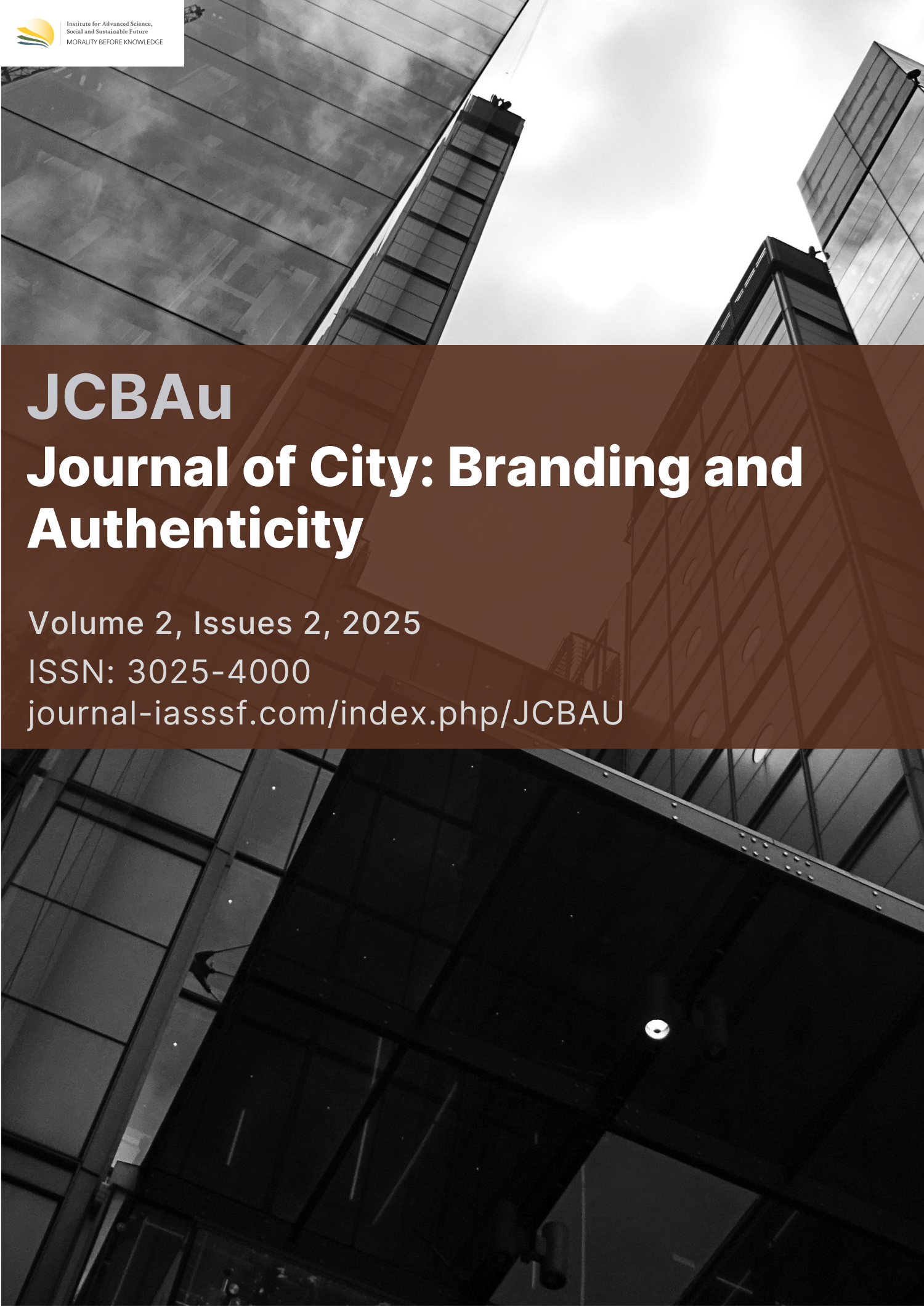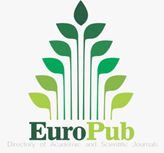The impact of transit-oriented development on heritage cities: A study of Haliç Metro and its influence on Istanbul’s urban fabric
DOI:
https://doi.org/10.61511/jcbau.v2i2.2025.1429Keywords:
Haliç Metro Köprüsü, heritage cities, placemaking, urban fabric, transit-oriented developmentAbstract
Background: Transit-Oriented Development (TOD) has emerged as a transformative approach to urban planning, aiming to balance modern infrastructure with sustainable urban growth. Methods: This study examines the impact of the Haliç Metro Köprüsü, a key component of Istanbul’s transit network, on the urban fabric of the Golden Horn—a heritage-rich area characterized by its historical and cultural significance. While the bridge has faced criticism for its modernist design and perceived disconnect from its surroundings, this research uncovers its latent potential to support placemaking strategies in heritage-sensitive contexts. Findings: The findings reveal that the Haliç Metro Köprüsü successfully enhances connectivity across Istanbul’s European districts, reducing congestion and providing efficient mobility for thousands of daily commuters. Its strategic location serves as a transit hub that links historically significant neighborhoods such as Balat and Galata, fostering economic activity and improving accessibility to cultural landmarks. Conclusion: The research highlights the need for targeted placemaking interventions, such as enhancing pedestrian pathways, integrating public art reflective of local history, and activating adjacent spaces for cultural events. These strategies could elevate the bridge’s role from a functional transit corridor to a vibrant public space that harmonizes modern infrastructure with Istanbul’s heritage identity. Novelty/Originality of this article: The study contributes new insights into the potential of TOD projects to act as catalysts for placemaking in heritage cities. By leveraging TOD principles and culturally sensitive urban design, infrastructure like the Haliç Metro Köprüsü can bridge the gap between modern urban needs and the preservation of historical identity, ensuring inclusive and sustainable development.
References
Ann, S., Jiang, M., & Yamamoto, T. (2019). Re-Examination of the Standards for Transit Oriented Development Influence Zones in India. Journal of Transport and Land Use, 12(1). https://doi.org/10.5198/jtlu.2019.1534
Babalik-Sutcliffe, E., & Cengiz, E. C. (2015). Bus Rapid Transit System in Istanbul: A Success Story or Flawed Planning Decision? Transport Reviews, 35(6), 792–813. https://doi.org/10.1080/01441647.2015.1059381
Campanella, R. (2015). Un Progetto di Territorio Per Il Turismo Sostenibile L’esperienza di Ricerca Applicata del Pisl “Slow Life. Viaggio Tra Culture E Natura Nel Parco Nazionale D’aspromonte, dal Tre Pizzi Al Limina.” LaborEst, 10, 17–22. https://doi.org/10.19254/LaborEst.10.03
Creswell, J. W., & Poth, C. N. (2016). Qualitative inquiry and research design: Choosing among five approaches. Sage publications.
De Luca, G., Shirvani Dastgerdi, A., Francini, C., & Liberatore, G. (2020). Sustainable Cultural Heritage Planning and Management of Overtourism in Art Cities: Lessons from Atlas World Heritage. Sustainability, 12(9), 3929. https://doi.org/10.3390/su12093929
Eltayeb, A., & Ustundag, K. (2022). Towards Vibrant City Centres for People; Promoting Push and Pull Transportation Policies in the Historical Peninsula-Istanbul. In F. Rosso, D. Morea, & D. O. Pribadi (Eds.), Innovations in Green Urbanization and Alternative Renewable Energy (pp. 47–64). Springer International Publishing. https://doi.org/10.1007/978-3-031-07381-6_5
Furlan, R., Al-Mohannadi, A. S., Major, M. D., & Paquet, T. N. K. (2022). A Planning Method for Transit Villages in Qatar: Souq Waqif Historical District in Doha. Open House International, 48(2), 425–446. https://doi.org/10.1108/ohi-05-2022-0121
Goodchild, M., Appelbaum, R., Crampton, J., Herbert, W., Janowicz, K., Kwan, M.-P., Michael, K., Alvarez León, L., Bennett, M., & Cole, D. G. (2022). A white paper on locational information and the public interest. https://repository.si.edu/handle/10088/114660
Higgins, C. D., & Kanaroglou, P. (2017). Rapid Transit, Transit-Oriented Development, and the Contextual Sensitivity of Land Value Uplift in Toronto. Urban Studies, 55(10), 2197–2225. https://doi.org/10.1177/0042098017712680
Hrelja, R., Olsson, L., Pettersson-Löfstedt, F., & Rye, T. (2022a). Challenges of Delivering TOD in Low-Density Contexts: The Swedish Experience of Barriers and Enablers. European Transport Research Review, 14(1). https://doi.org/10.1186/s12544-022-00546-1
Hrelja, R., Olsson, L., Pettersson-Löfstedt, F., & Rye, T. (2022b). Challenges of Delivering TOD in Low-Density Contexts: The Swedish Experience of Barriers and Enablers. European Transport Research Review, 14(1). https://doi.org/10.1186/s12544-022-00546-1
Lee, J.-Y., Choi, K., & Leem, Y. (2015). Bicycle-Based Transit-Oriented Development as an Alternative to Overcome the Criticisms of the Conventional Transit-Oriented Development. International Journal of Sustainable Transportation, 10(10), 975–984. https://doi.org/10.1080/15568318.2014.923547
Mozaffari, A. (2014). World heritage in Iran: Perspectives on Pasargadae. Ashgate Publishing, Ltd.
Mrđa, A., & Carić, H. (2019). Models of Heritage Tourism Sustainable Planning. In M. Obad Šćitaroci, B. Bojanić Obad Šćitaroci, & A. Mrđa (Eds.), Cultural Urban Heritage (pp. 165–180). Springer International Publishing. https://doi.org/10.1007/978-3-030-10612-6_14
Nafi, S., & Ouahrani, D. (2023). Transit-oriented Development from the View of Traditional City Model. Proceedings of the International Conference on Civil Infrastructure and Construction (CIC), 988–999. https://journals.qu.edu.qa/index.php/CIC/article/view/3673
Nigro, A., Bertolini, L., & Moccia, F. D. (2019). Land Use and Public Transport Integration in Small Cities and Towns: Assessment Methodology and Application. Journal of Transport Geography, 74, 110–124. https://doi.org/10.1016/j.jtrangeo.2018.11.004
Ottaviani, D., Demiröz, M., Szemző, H., & De Luca, C. (2023). Adapting Methods and Tools for Participatory Heritage-Based Tourism Planning to Embrace the Four Pillars of Sustainability. Sustainability, 15(6), 4741. https://doi.org/10.3390/su15064741
Paköz, M. Z., Baş, A., & Eren, F. (2019). An Analysis of the Changing Role of Istanbul as a Megacity in the World. ISOCARP. https://gcris.ktun.edu.tr/handle/20.500.13091/2799
Purwantiasning, A. W., & Bahri, S. (2019). Understanding the TOD Concept of Historical Areas Through Precedent Studies. Proceeding of International Conference on Advanced Research in Applied Science and Engineering, 12–14. https://repository.umj.ac.id/354/4/Purwantiasning_Bahri_PAPER-compressed.pdf
Ramzy, M., & Morsi, A. A. (2020). Envisioning Urban Tourism Sustainability In Cultural Heritage Destinations: A Bottom-Up Approach. Journal of Art & Architecture Research Studies - JAARS, 1(1), 48–64. https://doi.org/10.47436/jaarsfa.v1i1.31
Redzuan, N., Latip, N. S. A., Ismail, N., & Ujang, N. (2022). Identifying Urban Design Principles and Its Attributes for Waterfront Transit-Oriented Development (Wtod). Planning Malaysia, 20. https://doi.org/10.21837/pm.v20i21.1098
Rogers, W. P., Chen, N., & Looye, J. W. (2022). Beyond Traditional TOD: Integrating Multiuse Paths and Bike Share Into Public Transit to Address the First/Last Mile Issue. Urban Rail Transit, 9(1), 42–56. https://doi.org/10.1007/s40864-022-00182-x
Serra-Coch, G., Chastel, C., Campos, S., & Coch, H. (2018). Graphical approach to assess urban quality: Mapping walkability based on the TOD-standard. Cities, 76, 58–71. https://www.sciencedirect.com/science/article/pii/S0264275117307679
Thomas, R., Pojani, D., Lenferink, S., Bertolini, L., Stead, D., & Van Der Krabben, E. (2018). Is transit-oriented development (TOD) an internationally transferable policy concept? Regional Studies, 52(9), 1201–1213. https://doi.org/10.1080/00343404.2018.1428740
Tiwari, R., Nigro, A., & Bondada, M. V. (2023). Analysing Urban Form on Transit Oriented Development (TOD) Principles. International Review for Spatial Planning and Sustainable Development, 11(1), 141–157. https://doi.org/10.14246/irspsd.11.1_141
Tohjiwa, A. D. (2023). Implementation of TOD Concept on Gondangdia Station Area and the Influence on Menteng Heritage Area. Iop Conference Series Earth and Environmental Science, 1218(1), 012004. https://doi.org/10.1088/1755-1315/1218/1/012004
Wippel, S. (2019). Edirne as a Secondary City. Global Reconfiguration of the Urban. In B. Krawietz & F. Riedler (Eds.), The Heritage of Edirne in Ottoman and Turkish Times (pp. 484–533). De Gruyter. https://doi.org/10.1515/9783110639087-016
Xia, J., Kang, J., & Xu, X. (2024). Global research trends and future directions in urban historical heritage area conservation and development: A 25-year bibliometric analysis. Buildings, 14(10), 3096. https://www.mdpi.com/2075-5309/14/10/3096
Yin, R. K. (2018). Case study research and applications. Sage Thousand Oaks, CA.
Downloads
Published
How to Cite
Issue
Section
Citation Check
License
Copyright (c) 2025 Krismawanti, Wawan Destiawan

This work is licensed under a Creative Commons Attribution 4.0 International License.
















